- Visualizza Nuovi Contenuti
- Nikonland
- Sezioni
- Test
- Guide agli acquisti
- Indice Articoli
- Blog
- Forum
-
Fotografie
- Novità dalle Gallerie Fotografiche di Nikonland
- Una foto soltanto : Consigli & Critiche
- Ultime Immagini Caricate
- Ultimi Commenti
- _____________________________
- Contest e occasioni speciali di Nikonland
- Natura
- Fiori
- Ritratto
- Nudo
- Street
- Motori (auto e moto)
- Paesaggi e Panorami
- Architetture
- Viaggi e reportage di viaggio
- Sport (no motori)
- Vendo e Compro
- Downloads
-
Altro

Benvenuti su Nikonland Questo sito è indipendente, è autofinanziato, non promuove e non raccoglie pubblicità. Non è collegato con Nikon, Nital o le loro sussidiarie
Nikonland non è una rivista periodica e non è quindi sottoposta alla normativa vigente
Ultimi Test
-
 Panasonic Lumix DC- GH5: changing photography
Panasonic Lumix DC- GH5: changing photographyMax Aquila - gen 04 2018 17:26
-
 Sony Vario Sonnar 2,8/24-70 ZA SSM II: lo Zeiss...
Sony Vario Sonnar 2,8/24-70 ZA SSM II: lo Zeiss...Max Aquila - ago 08 2017 10:39
-
 Nikon 24-70mm F2.8E VR (test/prova)
Nikon 24-70mm F2.8E VR (test/prova)Lieve - ago 02 2017 16:25
-
 Nikon D7500 o Nikon D500 : quale scegliere ? (g...
Nikon D7500 o Nikon D500 : quale scegliere ? (g...Lieve - ago 01 2017 12:38
-
 Nikon D7500 : io non ho paura ! (test/prova)
Nikon D7500 : io non ho paura ! (test/prova)Lieve - ago 01 2017 13:59
Altri Contributi
-
 [libro Nikonland centenario] Il Terzo Occhio
[libro Nikonland centenario] Il Terzo OcchioAlberto Coppola - ago 17 2017 15:43
-
 [reportage] Non è più strano... il Tai Chi Chuan nei Parchi a Milano.
[reportage] Non è più strano... il Tai Chi Chuan nei Parchi a Milano.Silvio Renesto - ago 05 2017 13:16
-
 100 anni di Nikon il mito intramontabile
100 anni di Nikon il mito intramontabileRoby C - ago 04 2017 14:49
-
 01-09-2017 - Pravo dopo quarant'anni cambia sede
01-09-2017 - Pravo dopo quarant'anni cambia sedeRoby C - ago 02 2017 17:08
-
 31 luglio 1954... e uno che diverrà un famoso nikonista...
31 luglio 1954... e uno che diverrà un famoso nikonista...Roby C - lug 31 2017 18:48
-
 la Vera Storia della Riunione del 29 Luglio...
la Vera Storia della Riunione del 29 Luglio...Roby C - lug 30 2017 22:46
-
 Sardegna - Sud Est
Sardegna - Sud Estcris7 - lug 24 2017 19:27
-
 Avignone - Il festival off
Avignone - Il festival offMassimo Vignoli - lug 18 2017 21:59
-
 [editoriale] Garanzia cinqueminuti...
[editoriale] Garanzia cinqueminuti...Max Aquila - lug 12 2017 12:21
-
 [motori] Monza Historic
[motori] Monza HistoricGiannantonio - lug 06 2017 13:39
-
 [libro Nikonland centenario] だいすきニコン (daisuki Nikon)
[libro Nikonland centenario] だいすきニコン (daisuki Nikon)Alberto73 - lug 04 2017 21:52
-
 [manifestazioni] TRATTA 29 giugno 2017
[manifestazioni] TRATTA 29 giugno 2017tommowok - giu 30 2017 13:23
-
 [luoghi] i laghi del Trentino
[luoghi] i laghi del TrentinoAlberto73 - giu 29 2017 21:13
-
 [reportage] Tre Torri
[reportage] Tre TorriGiannantonio - giu 28 2017 15:46
-
 [Nikonland libro Centenario] come da tag
[Nikonland libro Centenario] come da tagValerio Brùstia - giu 26 2017 00:06
In evidenza
-
 Le Nikon del 2017
Le Nikon del 2017Lieve - feb 08 2017 08:36
-
 16 ottobre - 2006-2016 : dieci anni della nostr...
16 ottobre - 2006-2016 : dieci anni della nostr...Lieve - ott 16 2016 06:03
-
 La Stampa in Bianco e Nero
La Stampa in Bianco e NeroSpinoza - mag 19 2016 19:55
-
 Nikon D5 : semper fidelis (test/prova)
Nikon D5 : semper fidelis (test/prova)Lieve - ott 30 2016 17:17
-
 La nascita di Nikon (Nippon Kogaku) e la Marina...
La nascita di Nikon (Nippon Kogaku) e la Marina...Lieve - mar 04 2015 11:11
-
 Nikon D810 : la terra promessa (test/prova)
Nikon D810 : la terra promessa (test/prova)Lieve - mar 10 2015 13:50
-
 Il fascino intramontabile delle foto stampate
Il fascino intramontabile delle foto stampateLieve - mag 22 2014 09:23
-
 Calibrare e Profilare il monitor. Guida pratica
Calibrare e Profilare il monitor. Guida praticaSpinoza - mag 13 2014 12:57
Ultime News
-
 25 luglio 2017 : fine della ricreazione
25 luglio 2017 : fine della ricreazioneLieve - lug 28 2017 11:02
-
 La Nikon D850 ha un mirino ibrido ?
La Nikon D850 ha un mirino ibrido ?Lieve - lug 27 2017 05:40
-
 Importante aggiornamento firmware per la Nikon...
Importante aggiornamento firmware per la Nikon...Lieve - lug 12 2017 07:50
-
 Nuovo Nikon AF-P 70-300mm F4.5-5.6E VR (FX)
Nuovo Nikon AF-P 70-300mm F4.5-5.6E VR (FX)Lieve - lug 11 2017 07:28
-
 New Old Camera : servizio 'demo' e Meet...
New Old Camera : servizio 'demo' e Meet...Lieve - giu 12 2017 07:41
-
 Nuovo Nikon 10-20mm F4.5-5.6 VR
Nuovo Nikon 10-20mm F4.5-5.6 VRLieve - lug 07 2017 16:49
-
 Nuovo Nikon 8-15mm F3.5-4.5E Fisheye
Nuovo Nikon 8-15mm F3.5-4.5E FisheyeLieve - mag 31 2017 07:23
-
 Nuovo Nikon 28mm F1.4E
Nuovo Nikon 28mm F1.4ELieve - mag 31 2017 07:36
-
 Fotografia, messaggi, il tempo in cui viviamo.
Fotografia, messaggi, il tempo in cui viviamo.Lieve - giu 25 2017 05:35
-
 Il dado è tratto. Sarà il 2018 l'anno mirro...
Il dado è tratto. Sarà il 2018 l'anno mirro...Lieve - lug 12 2017 07:15
Sigma 180mm f2.8 Macro OS, the Macrosaur (field test/review )
ago 20 2015 09:50 |
Silvio Renesto
in International
Sigma 180mm macro test review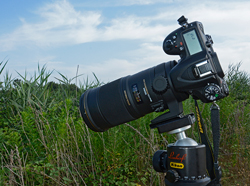 Thanks to a kind loan by Mauro Maratta, I had the chance to fulfill a wish: trying the Sigma 180mm f2.8 Macro OS on the field, and thus here are my impressions on that lens for what concerns macrophotography.
Thanks to a kind loan by Mauro Maratta, I had the chance to fulfill a wish: trying the Sigma 180mm f2.8 Macro OS on the field, and thus here are my impressions on that lens for what concerns macrophotography.Here on Nikonland it has been already written about this lens. Bruno Mora wrote an in-depth analysis from the point of view of construction and optical rendition, and also made a mini- comparison with the Nikon Micro-nikkor 200mm f4 IF ED.
I will try to complement what Bruno wrote, with my impressions about field use in macro photography.
The lens:
The 180mm f2.8 Macro OS, as Sigma says, is the only tele-macro of large aperture that reaches a reproduction ratio (RR) of 1:1, and this is true.
Sigma several yeras ago, made another 180mm f2.8 Macro, but it reached only a RR of 1:2 (0,5) and it was a real nightmare as for ergonomy, weight and Af speed were concerned.
As a paleontologist, I cannot resist to parallel the evolution of this "beast" of a lens with another very famous beast, the Tyrannosaurus
Decades ago Tyrannosaurus, like most other Dinosaurs, was seen as a slow, cumbersome giant, unfitted for survival; while now, after Dinosaur Renaissance in science and a few Jurassic Park in the movies, we see Tyrannosaurus like an awesome, powerful and sleek animal (despite its size).
 the dumb Zallinger's Tyrannosaurus
the dumb Zallinger's Tyrannosaurus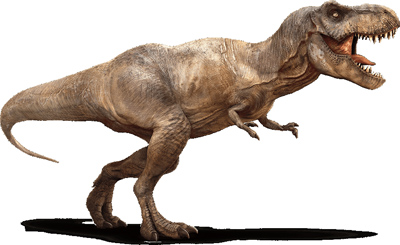 the new look of Tyrannosaurus
the new look of TyrannosaurusWell, the same happened with the 180mm Sigma f2.8!
The old
and the new one.
I never shoot with the old 180 Sigma f2.8 Macro (keeping it in hand and hearing the af sound in a shop was enough...) thus I cannot judge its optical quality.
But let's come back to the new Sigma 180 f2.8 Macro OS: it's huge, being as big as the older incarnation, a real dinosaur among macro lenses, but it is built in a completely different, and immeasurably better, way. It is a modern lens, well balanced and equipped of a detachable tripod collar that makes sense contary to the ergonomical hallucination one of the old one. Lens hood is really big, and doubled, a first section to be used on full format cameras and a second part to be added when the lens is used with an APS-C camera. Even the first part is a bit too large to be practical, at least for macrophotography.
Just a few data:
The focus distance window has the distances marked in feet and meters and, like in any macro worth the name, there is also the reproduction ratio at shorter distances.
From these data, with few calculations it is possible to know the actual focal length at different reproduction ratios and consequently at different focusing distances.
As usual by now (this doesn't mean it's a good thing anyway), actual focal length decreases approaching the minimum focusing distance. At 47cm it becomes 117mm.
Actual focal length variation with reproduction ratio (abscissa)
Focusing distance vs reproduction ratio (abscissa)
In macro it is even more imoprtant the working distance (the distance between the subject and the front lens). With the same focusing distance a lens with lower working distance (e. g. because the lens barrell extends a lot at short distances) will be less practical than one with a grater working distance, and there will be more chances to scare the subject if the latter is animated and mobile.
The greater working distance is one of the main reasons that make many macrophotographer (me included) to prefer "long" tele macros (180-200mm) with respect to more moderate 90-105mm macros.
If we compare different tele-macro lenses, working distance varies as follows:
The Sigma 180mm f2.8 Macro OS subject of this test, has a working distance of 22,5cm
The discontinued Sigma 180mm f3.5 Macro EX had a working distance of 23,5cm
The Sigma 150mm f2.8 Macro OS has a working distance of 18,5cm
The Nikon 200mm f4 micro-nikkor AfD ED has a working distance of 26cm.
These values are referred to the sole lens without the hood, that in the case of the two Sigma 180mm are rather huge, or really huge.
As far as the working distance is concerned, the 200mm f4 micro-nikkor has a clear advantage. But, even if longer is better, there are other variables into play, as we will see.
Aperture
The wide aperture makes the new Sigma 180 very useful also for portraits and general photography, while it is not so much important for macrophotography, where depth of field is always very small. It allows however to use a converter without losing too much f/stops, that may be of help for precise focusing.
As for all other macro lenses, actual aperture decreases at shorter distance, becoming f3.2 at 1,5m, f3.5 at 90cm, f4 at 80cm and f5 at shorter distances. The actual f/stop value appears on the camera display and in the exif data.
Test:
Yes
0 user(s) are online (in the past 15 minutes)
0 utenti, 0 ospiti, 0 utenti anonimi


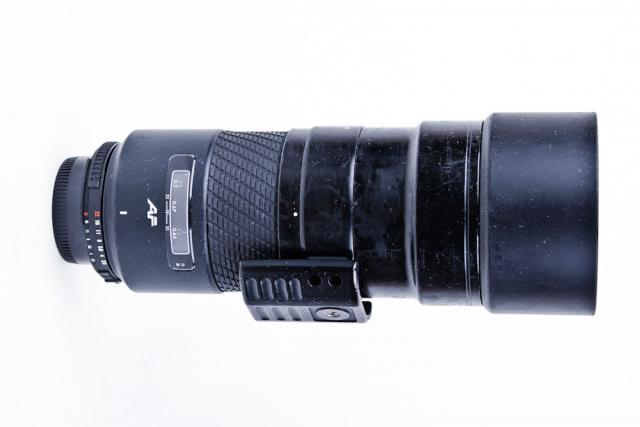
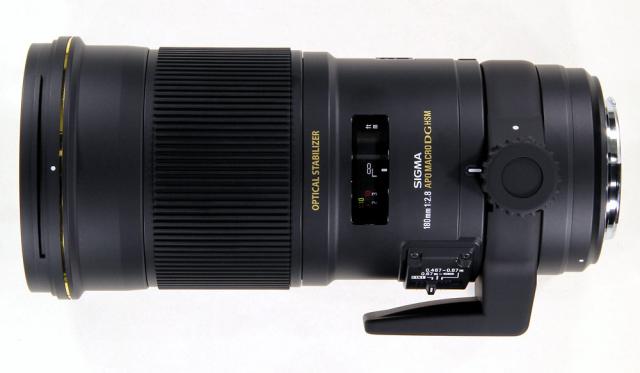
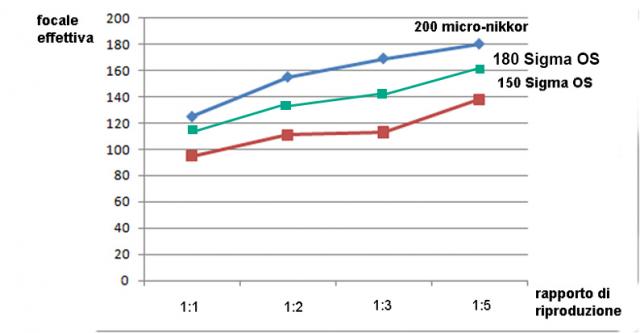
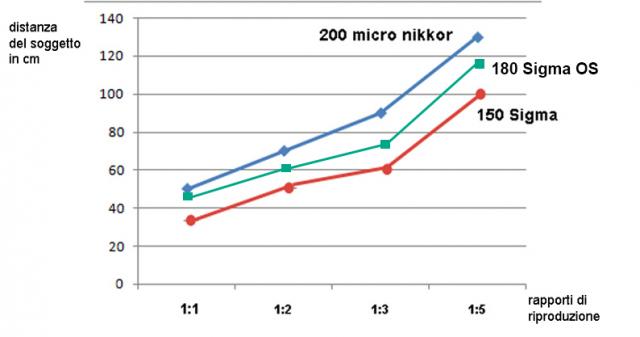











0 Comments